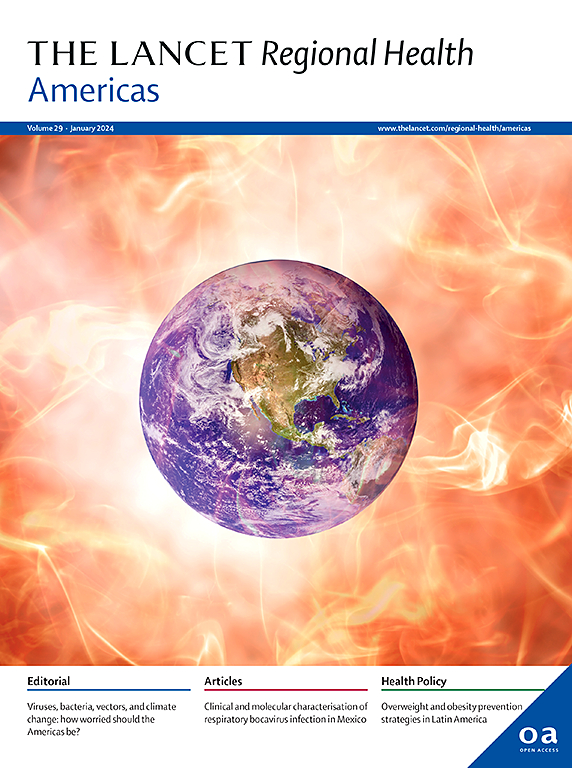基于临床乳腺超声图像使用深度学习预测乳房x线摄影乳腺密度:回顾性分析
IF 7
Q1 HEALTH CARE SCIENCES & SERVICES
引用次数: 0
摘要
乳腺密度,由乳房x线摄影图像得出,并由乳腺成像报告定义;数据系统(BI-RADS)是乳腺癌最强的危险因素之一。乳腺超声是另一种乳腺癌筛查方式,在资源匮乏的农村地区尤其有用。到目前为止,乳腺超声还没有被用来为需要乳腺密度的风险模型提供信息。本研究的目的是探索利用人工智能(AI)从临床乳腺超声影像中预测BI-RADS乳腺密度类别。方法我们比较了直接从乳腺超声图像预测乳腺密度的深度学习方法和仅从乳腺超声图像灰度直方图预测乳腺密度的机器学习模型。将人工智能乳腺超声所得乳腺密度作为乳腺癌危险因素与BI-RADS临床乳腺密度进行比较。回顾性(2009-2022)乳腺超声数据按个人分为70/20/10%组,用于培训、验证和报告结果的持续测试。研究结果:14066名女性(平均年龄53岁,年龄范围18-99岁)临床乳腺超声检查的405120张临床乳腺超声图像被回顾性地从三个机构中选择纳入:10393张培训(302574张),2593张验证(69842张),1074张检测(28616张)。人工智能模型在乳腺密度分类上达到AUROC 0.854,在统计上显著优于所有基于图像统计的方法。在现有的临床5年乳腺癌风险模型中,乳腺超声AI和临床乳腺密度预测5年乳腺癌风险AUROC分别为0.606和0.599 (DeLong检验p值为0.67)。结论:bi - rads可通过乳腺超声成像准确估计乳腺密度。与其他机器学习方法相比,人工智能模型提供了更好的估计。此外,我们证明了年龄调整,人工智能得出的乳房超声乳房密度在我们的人群中提供了与乳房x线摄影乳房密度相似的预测能力。在无法进行乳房x光检查的地区,通过超声波估计乳房密度可能有助于进行乳腺癌风险评估。资助国家癌症研究所。本文章由计算机程序翻译,如有差异,请以英文原文为准。
Prediction of mammographic breast density based on clinical breast ultrasound images using deep learning: a retrospective analysis
Background
Breast density, as derived from mammographic images and defined by the Breast Imaging Reporting & Data System (BI-RADS), is one of the strongest risk factors for breast cancer. Breast ultrasound is an alternative breast cancer screening modality, particularly useful in low-resource, rural contexts. To date, breast ultrasound has not been used to inform risk models that need breast density. The purpose of this study is to explore the use of artificial intelligence (AI) to predict BI-RADS breast density category from clinical breast ultrasound imaging.
Methods
We compared deep learning methods for predicting breast density directly from breast ultrasound imaging, as well as machine learning models from breast ultrasound image gray-level histograms alone. The use of AI-derived breast ultrasound breast density as a breast cancer risk factor was compared to clinical BI-RADS breast density. Retrospective (2009–2022) breast ultrasound data were split by individual into 70/20/10% groups for training, validation, and held-out testing for reporting results.
Findings
405,120 clinical breast ultrasound images from 14,066 women (mean age 53 years, range 18–99 years) with clinical breast ultrasound exams were retrospectively selected for inclusion from three institutions: 10,393 training (302,574 images), 2593 validation (69,842), and 1074 testing (28,616). The AI model achieves AUROC 0.854 in breast density classification and statistically significantly outperforms all image statistic-based methods. In an existing clinical 5-year breast cancer risk model, breast ultrasound AI and clinical breast density predict 5-year breast cancer risk with 0.606 and 0.599 AUROC (DeLong’s test p-value: 0.67), respectively.
Interpretation
BI-RADS breast density can be estimated from breast ultrasound imaging with high accuracy. The AI model provided superior estimates to other machine learning approaches. Furthermore, we demonstrate that age-adjusted, AI-derived breast ultrasound breast density provides similar predictive power to mammographic breast density in our population. Estimated breast density from ultrasound may be useful in performing breast cancer risk assessment in areas where mammography may not be available.
Funding
National Cancer Institute.
求助全文
通过发布文献求助,成功后即可免费获取论文全文。
去求助
来源期刊

Lancet Regional Health-Americas
Multiple-
CiteScore
8.00
自引率
0.00%
发文量
0
期刊介绍:
The Lancet Regional Health – Americas, an open-access journal, contributes to The Lancet's global initiative by focusing on health-care quality and access in the Americas. It aims to advance clinical practice and health policy in the region, promoting better health outcomes. The journal publishes high-quality original research advocating change or shedding light on clinical practice and health policy. It welcomes submissions on various regional health topics, including infectious diseases, non-communicable diseases, child and adolescent health, maternal and reproductive health, emergency care, health policy, and health equity.
 求助内容:
求助内容: 应助结果提醒方式:
应助结果提醒方式:


